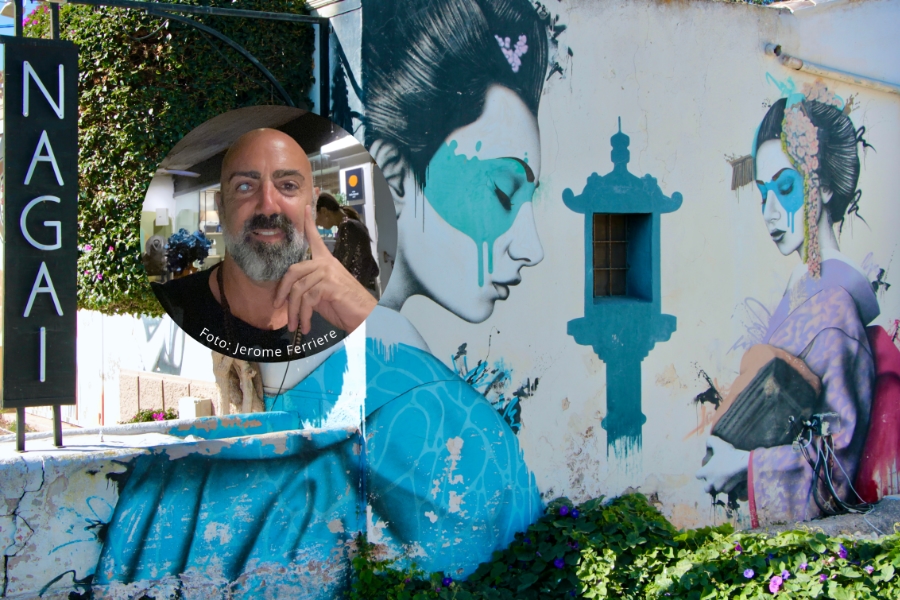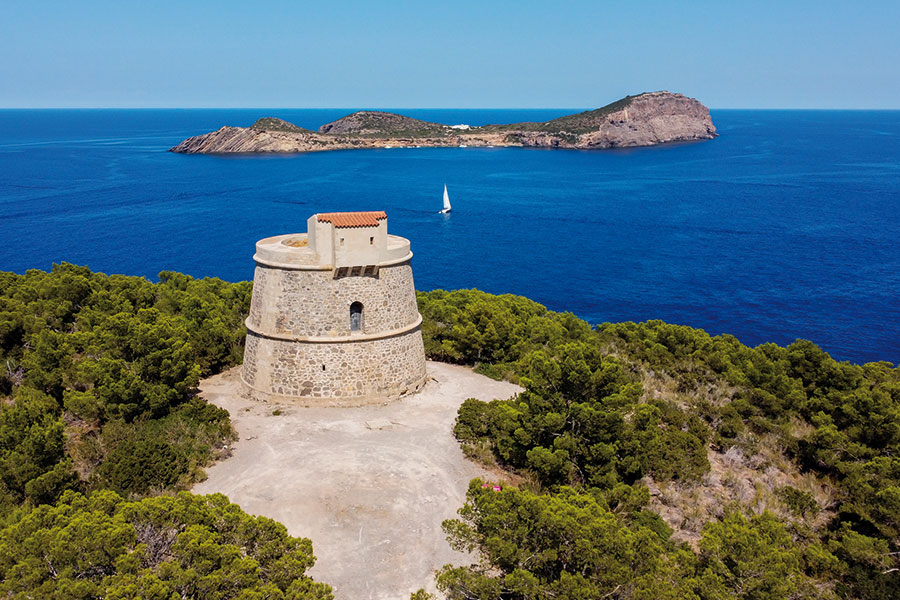Legal & Real Estate
Home, Garden & Decoration
Global Topics
Inside Ibiza
Health & Wellness
Ibiza Optimista
Published in Ibicasa Magazine on 15/04/2019
At this time in history a vibrant new civilization had arisen in Arabia, and was beginning its ascent in the western Mediterranean. Over the course of the next five centuries the Islamic Moors would attain humanity’s highest levels of science, statecraft, medicine and art since the fall of Rome. From the 8th to the 11th centuries their Hispanic territory, known as Al-Andalus, covered roughly three quarters of the Iberian peninsula, with Cordoba as its capital. For the first 200 years of this reign, the undeveloped islands that lay to the east (the Balearics) were simply not perceived as worthwhile territorial objectives.

Then, quite out of the blue, a formal military conquest was launched in 902. The driving force behind the offensive was the Emirate of Cordoba (756-929), an independent political entity ruled by a branch of the Umayyad dynasty. Why, after centuries of relative indifference, did the Emirate finally decide to incorporate the Balearics into their realm? The answer lies in a sea storm that occurred when a Moorish nobleman from Cordoba was on a pilgrimage. Late in the 9th century Isam al-Jawlani was undertaking his requisite hajj to Mecca when his ship was forced to seek shelter from a raging storm. The nearest port happened to be Palma de Mallorca. When the tempest had subsided, al-Jawlani continued on his journey, but he did not forget the strategic importance that the Balearics held for Al-Andalus. Upon returning from Mecca, he convinced the Emir to deploy a fleet to bring these “Eastern Isles” officially into the realm.

All told, Islamic rule on the island spanned 333 years, and Ibiza’s fortunes mirrored those of their rulers on the mainland. The early years after the island’s capture corresponded to a time when the Emirate of Cordoba was undergoing severe internal tensions. But in 929, this resilient state was able to transform itself into a splendid Caliphate, thus consolidating its position for the next 100 years, and establishing Al-Andalus as the undisputed leading power in the western Mediterranean.
The Caliphate marked the Golden Age of Hispanic Moorish achievement in every sphere of human endeavor from scholarship and poetry to technology and architecture. It also fostered a broad, tolerant and pluralistic society in which people prospered and innovation flourished. Ibiza, of course, was heir to these uplifting trends. Agriculture was greatly enhanced by state-of-the-art hydraulic technology. The waterworks at Es Broll near Santa Agnes exemplify the Moors’ marvelous engineering skills. This still-functioning system of irrigation channels, reservoirs and watermills creates a verdant oasis by tapping into underground water tables and collecting rainfall. You can also see restored Moorish water wheels around the island - particularly one on the sea front in Santa Eulària.

For our purposes, his life serves as a segue from the halcyon days of the Caliphate to the bitter rivalries of its collapse, a period known as the Fitna (“disintegration”) of Al-Andalus (1009-1031). Al-Sabbini, who died in 1077, was likely born during this period of civil strife, the upshot of which was that, in 1031, the Caliphate of Cordoba splintered into 39 patchwork states called taifas, literally “petty kingdoms”. As a result of this political shake-up, Ibiza came under the rule of the Taifa of Denia, a despotic regime that we will explore in our next episode. Until then we leave you with a small taste of Al-Sabbini’s poetry:
Heavy were the goblets when, in emptiness, they were brought to us, but when filled with the pureness of wine, they became so light they fairly soared, as bodies are lightened when infused by spirit.
Related Articles

Susana Camacho Roig: A Passion for Heal...
Susana, an Ibiza native, has led Biorganic for 17 years, bringing healthy food to Ibiza while supporting local agriculture. Her journey began to heal her son's asthma, disc... READ MORE
Susana, an Ibiza native, has led Biorganic for 17 years, bringing healthy food to Ibiza while supporting local agriculture. Her journey began to heal her son's asthma, discovering the importance of organic food. With two stores in Ibiza and four more, Biorganic drives access to healthy foods. By ... READ MORE
.jpg?locale=en)
Sven Puch: An Ibiza Story
Many people have found their true selves here on Ibiza. For over 40 years it has been a place of freedom where you can leave behind who you were, and choose to be who you r... READ MORE
Many people have found their true selves here on Ibiza. For over 40 years it has been a place of freedom where you can leave behind who you were, and choose to be who you really are. Sven Puch grew up in Berlin, and as a young lad he thought that becoming a priest might be his future. He liked th... READ MORE

The Odyssey of Melchior Arnold
Melchior's journey from his childhood in Ibiza to becoming a co-owner of the popular restaurant Nagai has been anything but a straight line. Similar to Homer's epic tale, T... READ MORE
Melchior's journey from his childhood in Ibiza to becoming a co-owner of the popular restaurant Nagai has been anything but a straight line. Similar to Homer's epic tale, The Odyssey, Melchior's story involves adventures and determination. Born to alternative-seeking parents, Melchior's early yea... READ MORE

The Pirate Towers of Ibiza
Discover Ibiza's Rich Pirate History! 🏴☠️ The island's coastline is dotted with ancient watchtowers, once the defense against North African pirates. These towers, strategi... READ MORE
Discover Ibiza's Rich Pirate History! 🏴☠️ The island's coastline is dotted with ancient watchtowers, once the defense against North African pirates. These towers, strategically placed, signaled danger, allowing locals to prepare. Explore these remnants of the past, like the iconic tower overlook... READ MORE
© Copyright 2024
Ibicasa Home and Services.
